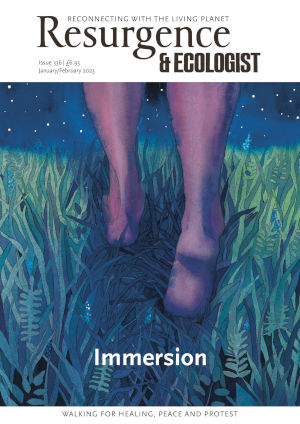Greta Thunberg’s first book was a collection of transcripts of her notorious speeches: a slim paperback small enough to tuck inside a jacket pocket. Her second offering is the complete opposite: a doorstep of a thing, bringing together dozens of contributions from scientists to campaigners in what attempts to be perhaps the most comprehensive overview of climate change published in book form, complete with full-colour graphs, double-page photographs, and enough literal weight to ensure it never leaves the house with you.
Split into five distinct sections made up of short essays from a broad range of voices, the book moves from the science of climate to the history of resistance and to some prescriptions for the future. At regular intervals we hear from Thunberg, writing in her unmistakable speaking voice, bringing her usual moral clarity and soaring rhetoric to bear on the themes of each chapter.
Her contributions are interesting enough and show how much she has developed as a thinker since she first instigated a school strike for climate. In those few years of her presence in public life, Thunberg, who turns 20 in January, has grown braver and bolder in moving from a simple moral critique of the lack of climate action to a forceful political appraisal of the rampant inequality that characterises the crisis. In the pages of this book, she speaks frequently and unflinchingly of anti-capitalism and colonialism. This is now firmly her register.
However, she hasn’t changed her tendency to speak in sweeping, generalist terms. Nor has she sharpened the specifics of her prognosis. In page after page, she is trapped by a fixation on a lack of education and awareness as the key barrier to change. If we really knew the seriousness of the situation, she argues, we would see real progress. This ignores two pertinent realities. First, concern about the climate crisis and support for climate-friendly policies are consistently high among many high-emitting populations, and secondly, what of the well-established vested interests in the economy she eloquently describes?
Perhaps because of this faintly naive analysis of the blocks to progress, any prescribed programme of action remains conspicuously absent. Even among the essays themselves, the fifth of these five sections, What We Must Do Now, is disappointingly light on the promise of its title. Most of its words are still devoted to lengthy descriptions of the dire situation in which we find ourselves, something we have been battered over the head with for 400 pages by that point. In fairness, the huge breadth of voices contained in this book could never have been held together by any one set of proactive proposals, and it’s hard to think of a single dimension of the climate crisis that isn’t examined somewhere in these pages.
The cumulative effect of the essays is to canonise one of the great shifts in framing achieved by the school strikes: that is, to firmly acknowledge the truth that we are within the climate emergency, not facing it. For too long, environmental campaigners were led to believe there was still time to redress the threat of climate chaos – whilst the clock was ticking to Copenhagen, to Paris, to 2030, to perpetuity – and now, while acknowledging the grief and despair of what we have already lost, the book does at least recognise that it is never altogether too late.
These essays capture this balance perfectly, blending an objective overview of climate science with an honest framing of the political crisis. It’s an audacious thing to call any book the climate book. Ultimately, The Climate Book more or less lives up to its title, offering something as close to as comprehensive a snapshot of the climate movement in 2022 as anyone could hope to compile.








